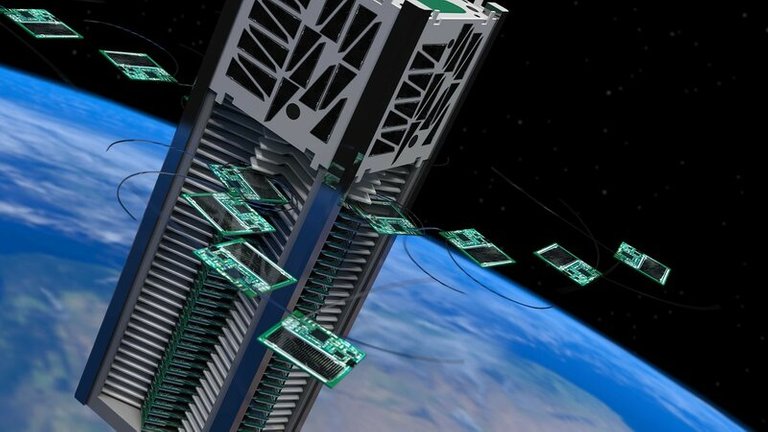Breakthrough Starshot, a program funded by Yuri Milner and Stephen Hawking to develop and launch interstellar missions, flew its first prototypes of the future space probes - the smallest ever launched.
Six nanosatellites achieved low Earth orbit, piggybacking on 'Max Valier' (Italy) and 'Venta' (Latvia) satellites, launched by Indian rocket. Two of them are attached to the spacecrafts and four are in the special container onboard of 'Max Valier' and are to be released in free float after reliable communications are established.

Image: Breakthrough Initiative
Nanosatellites named Sprites are built on a single circuit board. The 3.5 by 3.5 cm chip wejgh just four grams but contains solar panels, computer, magnetometer and radio for direct communication with Earth.

Image: Image: Breakthrough Initiative
Currently only signal from Venta-based Sprite is received - there is no contact with Max Valier. Engineers afraid that orientation system of ' Max Valier' is broken and satellite cannot get command to release four Spritesfrom the container. Anyway, one Sprite is working and it is definite success.
In the future Breakthrough Initiative plans to produce next generations of Sprites by thousands. $20 probes will be launched in swarms to study Earth and planets.
The final goal of BI - to send swarm of tiny probes to Alpha Centauri - they will be propelled by solar sails and powerful lasers based on Earth or Moon. The plan is to reach the closest star in 20 years.

For further reading: https://breakthroughinitiatives.org/News/12
That kind of technology is pretty neat. I think that would be amazing to be able to get something out to the nearest star in only 20 years. But would it even be able to talk back to earth at that distance? Or would it take 20 years for a single message to even get back here?
There is a challenge to receive the transmission. But it will go back 4 years. 20 years is travel time with 20% of light speed